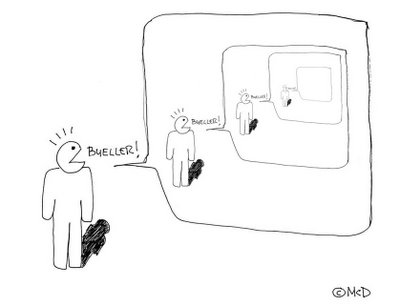 "Santa Maria del Fiore, Florence"
"Santa Maria del Fiore, Florence"For a brief moment let's look back at the original Renaissance. It lasted about 400 years and to a great extent determined many of the ways we believe societies should be today. However it's important to note that the transition was by no means steady, rational, expected.
1315-1317 Famine (starvation due to changes in global weather)
1348-1350 Black Death
1397 Founding Medici Bank (a "global" banking system - sometimes works well, sometimes not so well. Hmmm?!)
1452-1519 Leonardo Da Vinci (illegitimate genius recognized and rises to fame)
1455 Printed Guttenberg Bible (...was printing equivalent to the Web today in terms of it's break through?)
1492 Columbus discovers the New World ("dang... where are the spices?!")
Of course a lot of change patterns that are parallel to this past, which once took several 100 years, have been made much more quickly, probably about one tenth of the time.
1974 Cobol-based desk-side business computers
1977 Apple II
1981 IBM PC
1982 Oracle (renamed)
1975-1985 Microsoft founding
1988 Internet opens to commercial interests
1996 Google
1994-1996 Yahoo founding
... my favorites Tandem Computer, 1974-1997 (Acquired by Compaq ... Compaq acquired by HP), SGI Silicon Graphics 1982- still alive!
Now, even since ancient times, perhaps since the first humans, we are divided into two types. This is NOT intended to hurt anyone's feelings! There are those of us who wonder every single day what it will mean to have faster, clearer, more accurate knowledge. Even more importantly the ability to ask a question and be able to say - nobody actually has an answer for that. Those are the few of us.
On the other side, frankly most of the world, are those who love new technologies because it simply makes traditional processes cheaper, more efficient, more profitable.
What surprises me is that the few of us that see this disconnect (you!) don't seem to be doing much to define the true future. We get hung up on one area (SEO, SaaS, Open Systems ...) and don't have too many debates about what integrated technologies may ultimately mean in terms of global economies, businesses, political influences...
I'm not suggesting this is a fixed vision but it would be nice to periodically have some deep discussions in these directions.
"Silicon Valley"

























